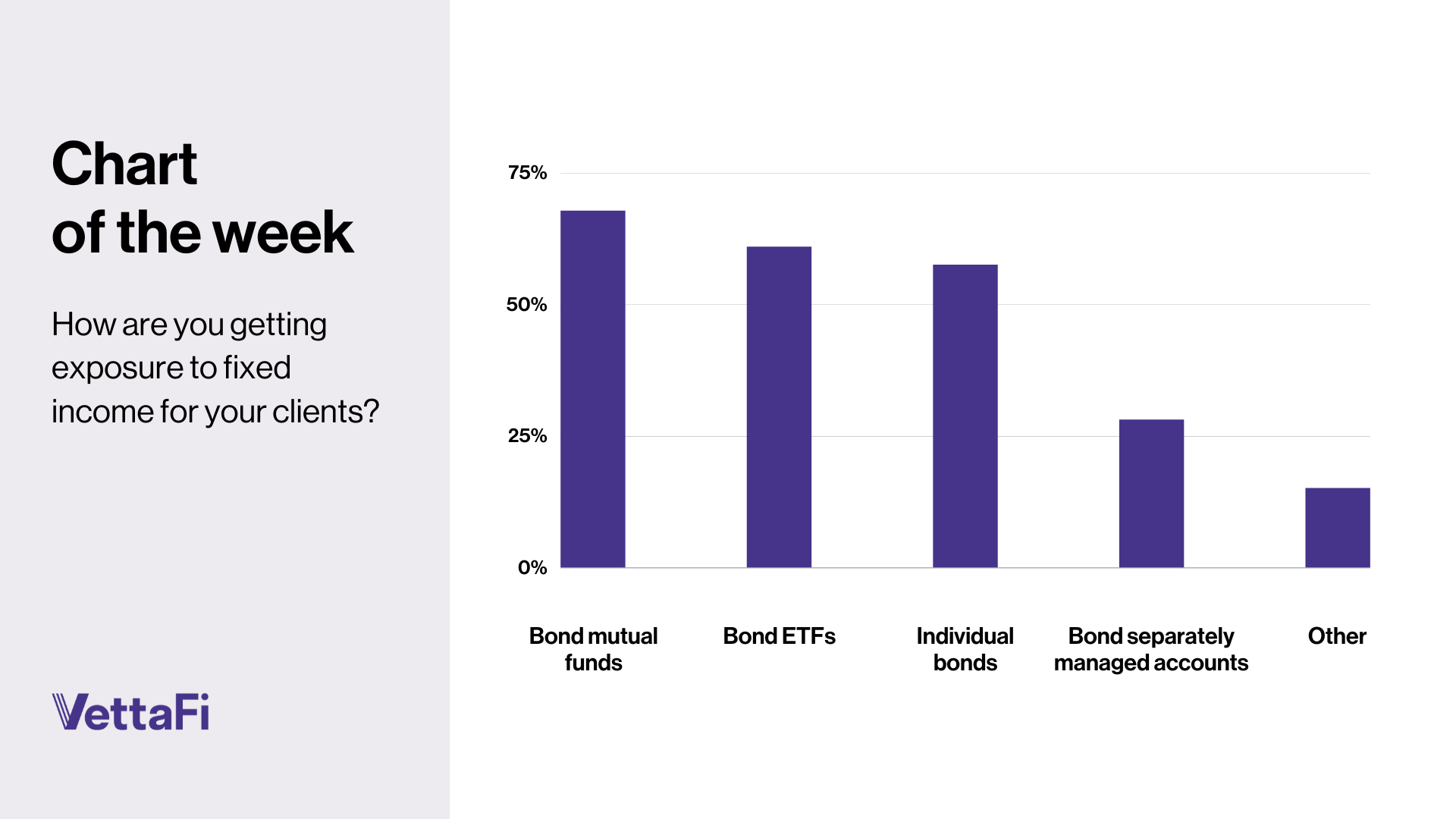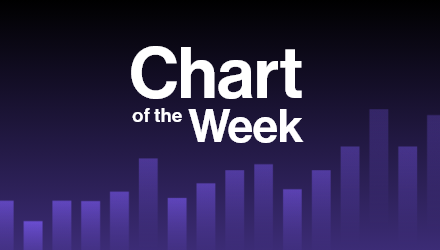As of late March, $45 billion flowed into U.S.-listed bond ETFs, more than the $26 billion for stock-based ETFs. While we certainly expect equity ETF demand to pick up as the year progresses, strong adoption is encouraging as with $1.3 trillion in assets bond ETFs only represent 20% of the overall base. While bond ETFs are increasingly being used by financial advisors to get exposure to fixed income, it is not the most popular way.
During a March webcast hosted by VettaFi, we asked advisors to select all the ways they were getting exposure to fixed income for their clients. Bond mutual funds were selected by 68% of respondents, followed by bond ETFs (61%), and individual bonds (58%). Separately managed accounts and other means were selected by a smaller percentage of respondents.
Since advisors are using more than one approach, let’s discuss some of the differences between individual bonds and bond ETFs with some examples. We’ll cover bond mutual funds versus bond ETFs in the future.

In a recent article on our sister site Advisor Perspectives, contributor Laurence Seigel highlighted some of the advantages of using bond funds instead of owning individual bonds. He grouped bond ETFs and mutual funds. The advantages include increased diversification and enhanced return opportunities.
Let’s say as an advisor you are looking to invest in a handful of corporate bonds maturing in 2025 because your client will have a cash need then. Rather than building your own customized portfolio, there are ETFs owning just bonds maturing in the year.
The Invesco BulletShares 2025 Corporate Bond ETF (BSCP) and the iShares iBonds Dec 2025 Term Corporate Bond ETF (IBDQ) both invest in more than 400 high-quality bonds issued by companies like Goldman Sachs, Microsoft, and Visa. The risk to your portfolio of a downgrade to junk status before 2025 is notably diminished with a broader approach. Each ETF charges a net expense ratio of 0.10%, which likely more than covers the cost to you to build and manage it.
For years, advisors turned to actively managed bond mutual funds to increase their return opportunities on the belief that experienced managers supported by the firm’s team of bond analysts had the ability to generate enhanced total return by purchasing bonds selling at attractive levels. While these mutual funds still are around, many asset managers now also offer actively managed bond ETFs. The JPMorgan Core Plus Bond ETF (JCPB) is one such fund that has provided a relatively strong total return in 2023, rising 4.2% year-to-date as of March 27, ahead of the 3.8% gain for the Bloomberg Barclays Aggregate Index.
Meanwhile, the Vanguard Total International Bond ETF (BNDX) which was up 4.1% in the same period, provides easy access to bonds issued the governments of France, Germany, Italy, Japan, and more. As an advisor you easily can tap into multiple income sources using bond ETFs relative to owning bonds directly.
Another benefit to using bond ETFs is the clarity. Rather than dealing with the opaqueness of trading individual bonds over the counter, bond ETFs trade on an exchange just like a stock does with the important ability for price discovery to understand fair market value. As more advisors appreciate the benefits of investing in bond ETFs, the industry’s asset base will climb higher.
For more news, information, and analysis, visit the Fixed Income Channel.

